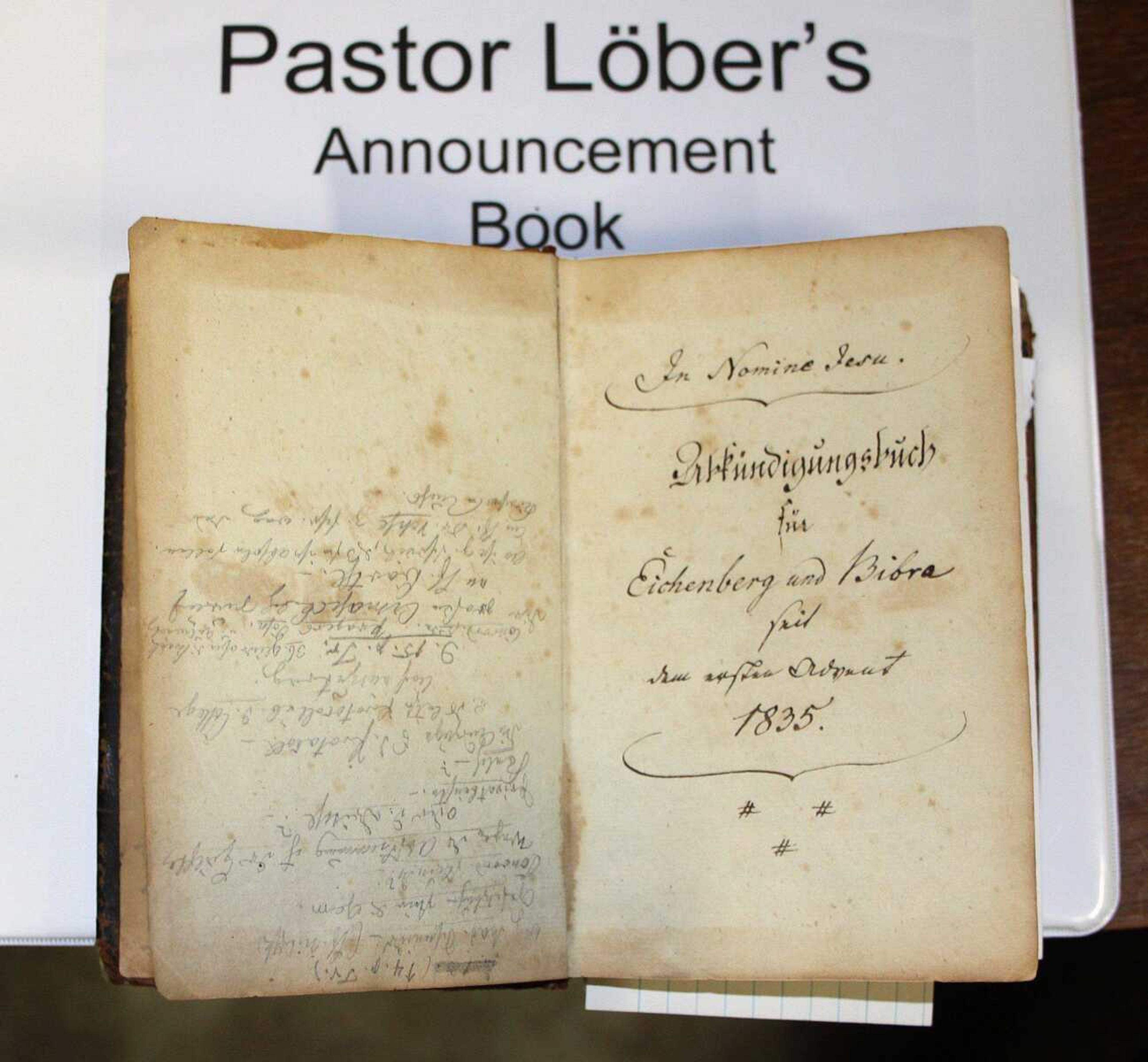Southeast interns transcribe German documents, uncover Altenburg heritage
As the Lutheran Heritage Center and Museum in Altenburg, Mo., celebrates its 100th birthday this year, Southeast Missouri State University interns have been discovering East Perry County's German heritage by transcribing historical documents and digitizing headstones...
As the Lutheran Heritage Center and Museum in Altenburg, Mo., celebrates its 100th birthday this year, Southeast Missouri State University interns have been discovering East Perry County's German heritage by transcribing historical documents and digitizing headstones.
Dr. Dieter Jedan, head of the university's Department of Foreign Languages and Anthropology, has been sending students to Altenburg since 2008.
"For the past three years, my department ... has been involved with Altenburg and with the manuscripts they have in their archives," he said. "So I hope when we go through the manuscripts transcribing them we will find why the early Lutherans left Germany and how the Lutheran Church Missouri Synod was founded and what the actual tenets were."
He said advanced students can choose the internship instead of a class.
Jedan, who came to the United States from Germany in 1967, said he had 15 interns so far who have transcribed a few hundred documents and did cemetery research digitizing the headstones and transcribing headstone inscriptions. He offers four internship programs such as research dealing with handwritten manuscripts, digitizing of headstones, a tour guide program and participation in the first international conference in Altenburg this October, where local scholars and people from Germany come to Altenburg to talk about German immigration to East Perry County.

"I expect probably 75 to 100 guests," Jedan said.
Jedan said the work on the headstones is urgent because many of them have been damaged by the weather and are becoming unreadable.
"Digitizing them is important since it allows researchers worldwide to access the information without having to come to Altenburg."
Emma Crosby, an intern at the Lutheran Heritage Center and Museum last fall, transcribed about 50 historical pages with a team member and worked at the museum one day per week.
"It was kind of faded over the years, so it was really interesting," said Crosby about the work with the historical documents. "I am glad somebody else worked with me; that really helped."
Crosby went to the University of Jena in Germany last year and said her German improved during her internship, especially because her team partner was speaking good German.
Carla Jordan, director of the museum in Altenburg, said the interns are doing a beautiful job.
"This is our fourth semester [with the interns], and it has been fantastic," she said. "They have translated tons of documents. And that is the biggest bird in here. Because we have lots of historic documents, but they are all in German. I don't know what we would do without them."
So far, the first transcribed pages reveal a contract immigrants had to sign in Germany before their departure to the United States. Prospective immigrants had to agree to follow the Lutheran faith.
"We know for a fact that many of them were not Lutheran," Jedan said. "But everybody had to sign the agreement."
Robert Schmidt, born in Altenburg and the president of the Perry County Lutheran Historical Society, has ancestors from the original 1838 immigration to Altenburg.
He said that immigrants left Bremerhaven, Germany, in the second week in November 1838 in five ships.
The first ship landed in New Orleans on New Year's Eve in 1838, Schmidt said.
"Before they left Germany, they heard that the people in the United States wanted religion and wanted the word of God."
But when the Germans landed in New Orleans, there was just partying and drinking going on.
"They figured these people did not want religion, they just wanted to have a good time," he said. "They could not go back, because they spent most of their money coming over."
He said the Saxons stayed in New Orleans for two days and then came up to the Mississippi River and landed in St. Louis in January 1839.
"They wanted to buy land, so they sent out people scouting for land to purchase," he said. "Three places came into their consideration."
Schmidt said the area along the Meramec River was too close to St. Louis for Bishop Stephan, who brought the Germans to America. Stephan thought there might be too much outside influence by that city on his people. He also did not want to settle in Illinois, because it was too low lying and might flood.
"Finally they decided to settle in Perry County, Mo., and bought 4,475.88 acres and paid $9,234.25," Schmidt said.
Connect with the Southeast Missourian Newsroom:
For corrections to this story or other insights for the editor, click here. To submit a letter to the editor, click here. To learn about the Southeast Missourian’s AI Policy, click here.










